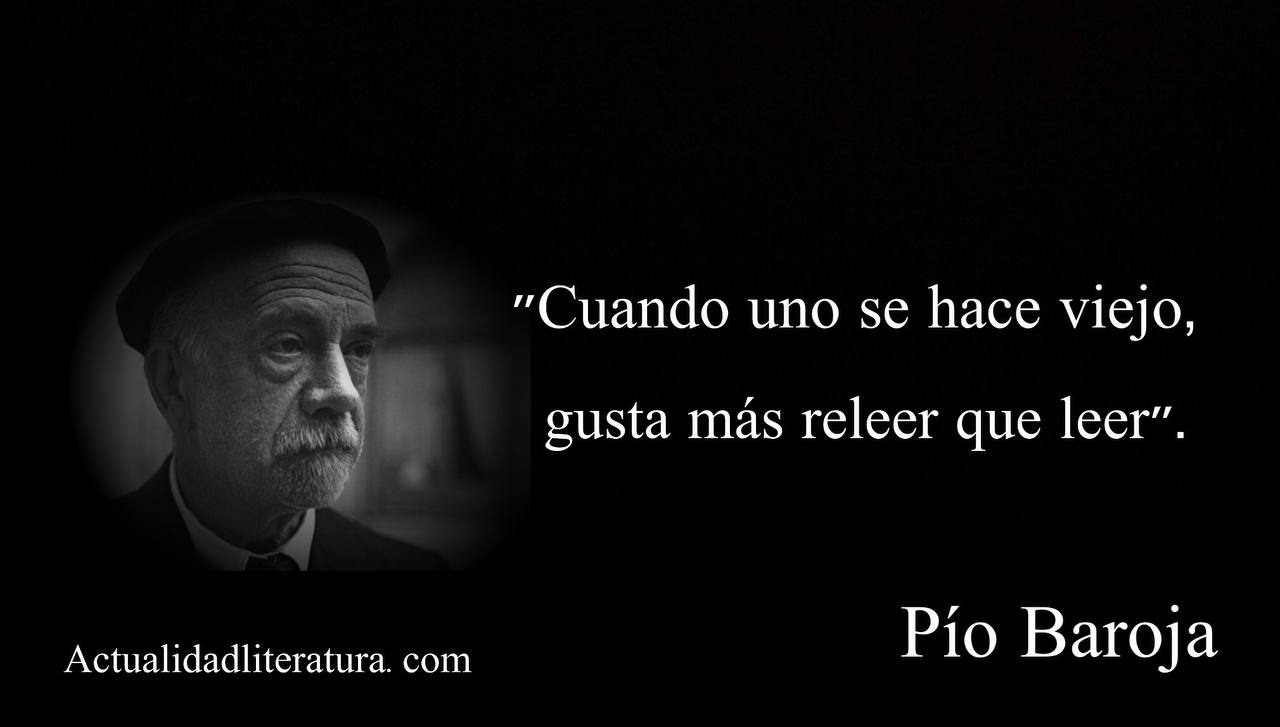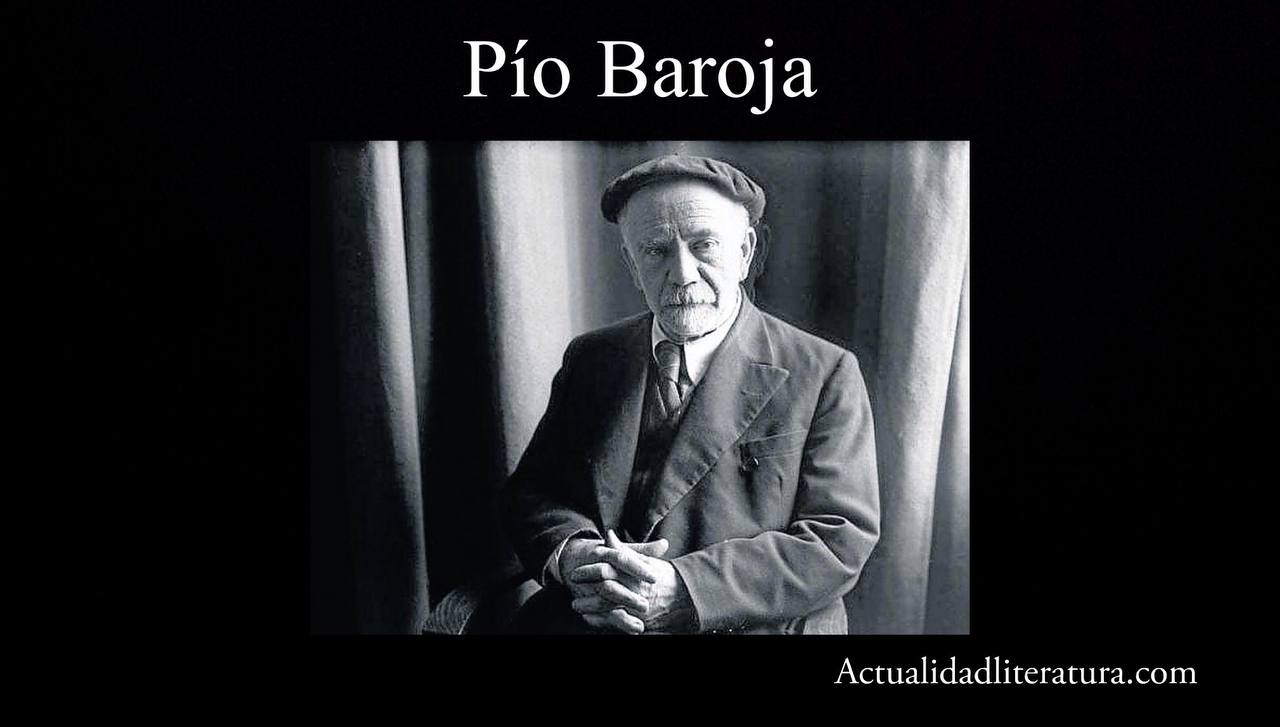
Phrase of Pio Baroja
Pío Baroja y Nessi was a writer born in San Sebastián, Spain, on December 28, 1872, belonging to the so-called generation of '98. The case of the author from San Sebastian is quite peculiar, since he obtained a doctorate in medicine before giving himself completely to his literary vocation. Although he also dedicated himself to the theater, the novel is the narrative genre that made him known.
Equally, Baroja's books show four representative traits of his own philosophical and political leanings: skepticism, anticlericalism, pessimistic individualism and anarchism. In addition, the work of the Basque writer reflects clear anti-rhetorical preferences —reaffirmed by a synthesized expression— along with a temper far removed from realism.
The narrative of Pío Baroja
style features
- Writing in concrete phrases and distant from any academicism
- expressive simplicity
- Selection of the most significant attributes of a person or object (graphic impressionism) instead of a detailed description.
- Rough intonation manifested through vocabulary that breaks down the context and the settings in line with the writer's pessimistic mood.
- Presence of short essays embedded in the middle of the narrative in order to capture some of the particular ideas of the author.
- Condensation of time and space (achieved through narrative speed), which allows covering the entire life of a person or even generations.
- Use of short chapters
- Very natural and colloquial dialogues.
- Linguistic precision; each element is detailed with the exact words in order to promote a dynamic and enjoyable reading of the texts.
(arbitrary) classification of his books
Pio Baroja he arranged (in a somewhat haphazard manner) his written works into nine trilogies and two tetralogies. Among those sets, "Saturnalia" was a series published almost entirely after Baroja's death, which occurred in Madrid, on October 30, 1956.
This circumstance occurred to avoid confrontations with the Francoist censorship (especially for issues related to the Civil War). Further, the last seven books completed by Baroja are considered loose novels, since they are not part of the classification devised by the author. The groups in question are:
basque land
- Aizgorri's house (1900)
- The estate of Labraz (1903)
- Zalacaín the adventurer (1908)
- The legend of Jaun de Alzate (1922)
fantastic life
- Adventures, inventions and mystifications of Silvestre Paradox (1901)
- Path of perfection (mystical passion) (1901)
- paradox king (1906)
The struggle for life
- The search (1904)
- Bad weed (1904)
- red dawn (1904)
On
- The fair of the discreet (1905)
- the last romantics (1906)
- The grotesque tragedies (1907)
The race
- the wandering lady (1908)
- The city of fog (1909)
- The science tree (1911).
The cities
- Caesar or nothing (1910)
- the world is like that (1912)
- Perverted sensuality: amorous essays of a naive man in an age of decadence (1920)
The sea
- Shanti Andía's concerns (1911)
- The labyrinth of mermaids (1923)
- The pilots of height (1929)
- Captain Chimista's star (1930)
agonies of our time
- The great whirlwind of the world (1926)
- The vagaries of fortune (1927)
- late loves (1926)
The dark jungle
- Errotacho's family (1932)
- cape of storms (1932)
- The visionaries (1932)
the lost youth
- The nights of the Good Retreat (1934)
- The priest of Monleón (1936)
- carnival madness (1937)
Saturnalia
- the wandering singer (1950)
- miseries of war (2006)
- The whims of luck (2015)
loose novels
- Susana and the flycatchers (1938)
- Laura or the hopeless loneliness (1939)
- Yesterday and today (published in Chile in 1939)
- The Knight of Erlaiz (1943)
- The bridge of souls (1944)
- The Swan Hotel (1946)
- the wandering singer (1950)

Pio Baroja
Synopsis of some of the most emblematic books of Pío Baroja
The estate of Labraz (1903)
It is a novel set in the rural surroundings of Álava during the XNUMXth century. In her, Baroja recounts as a serial the drama of a family whose mayorazgo is exercised by Don Juan de Labraza blind man. The latter sees the peace of his town altered when her sister Cesárea returns to the town together with her unscrupulous husband, Ramiro, causing the enmity between the brothers.
Ramiro first seduces Marina —the landlady's daughter— and then his sister-in-law Micaela, with whom he plots to precipitate the death of Cesárea (who is in poor health) and escape after stealing some relics from the church. Later, Rosarito, the daughter of Ramiro and Cesárea, also dies. Meanwhile, Don Juan must put up with such gossip in a place of conservative and puritanical customs.
The search (1904)
Estimated by historians as one of Baroja's most important books, The search It is located in the poorest areas of Madrid. There, Manuel, the main character, experiences constant restlessness because it is very difficult for him to find a stable job. But, despite the harsh daily life and the prevailing precariousness, he never loses hope of building a better life for himself.
The science tree (1911)
It is the best-known work of the Spanish writer —very difficult to synthesize in a few words— and that deeply explores the following philosophical precepts:
- The clash between positivism and vitalism; embodied by the two central characters of the story: Andrés Hurtado and uncle Iturrioz.
- Andrew (positivist) it trusts in the advances of science as an answer to the problems of human existence.
- Iturrioz (vitalist), shows an inclination towards Nietzsche's precepts that advocate the discarding of Judeo-Christian values.
- intellectual pessimism, widespread ideology in Europe thanks to Immanuel Kant's libertarian criticism of the Ideas of Reason (God, soul and world).
- Arthur Schopenhauer's approach: scientific knowledge is antagonistic to the meaning of life each individual.
- The nihilistic message at the end: the death of the person brings with it the death of the Universe.
The nights of the good retirement (1934)
In this novel, Baroja focuses on a classic existential theme: the brevity of life. For it, the author evokes the sphere of Madrid at the end of the XNUMXth century, characterized by a bohemian society full of inequalities. Likewise, this book shows a series of contradictory, singular and anguished characters in an environment that considers the cultural level of each one to be irrelevant.
Another distinctive feature of the novel is the use of narrative fiction mixed with the naturalness of the numerous social gatherings developed in the text. In addition, the memories of youth generate a feeling of longing in the protagonists of the story, who created a special bond in the Buen Retiro Gardens.



